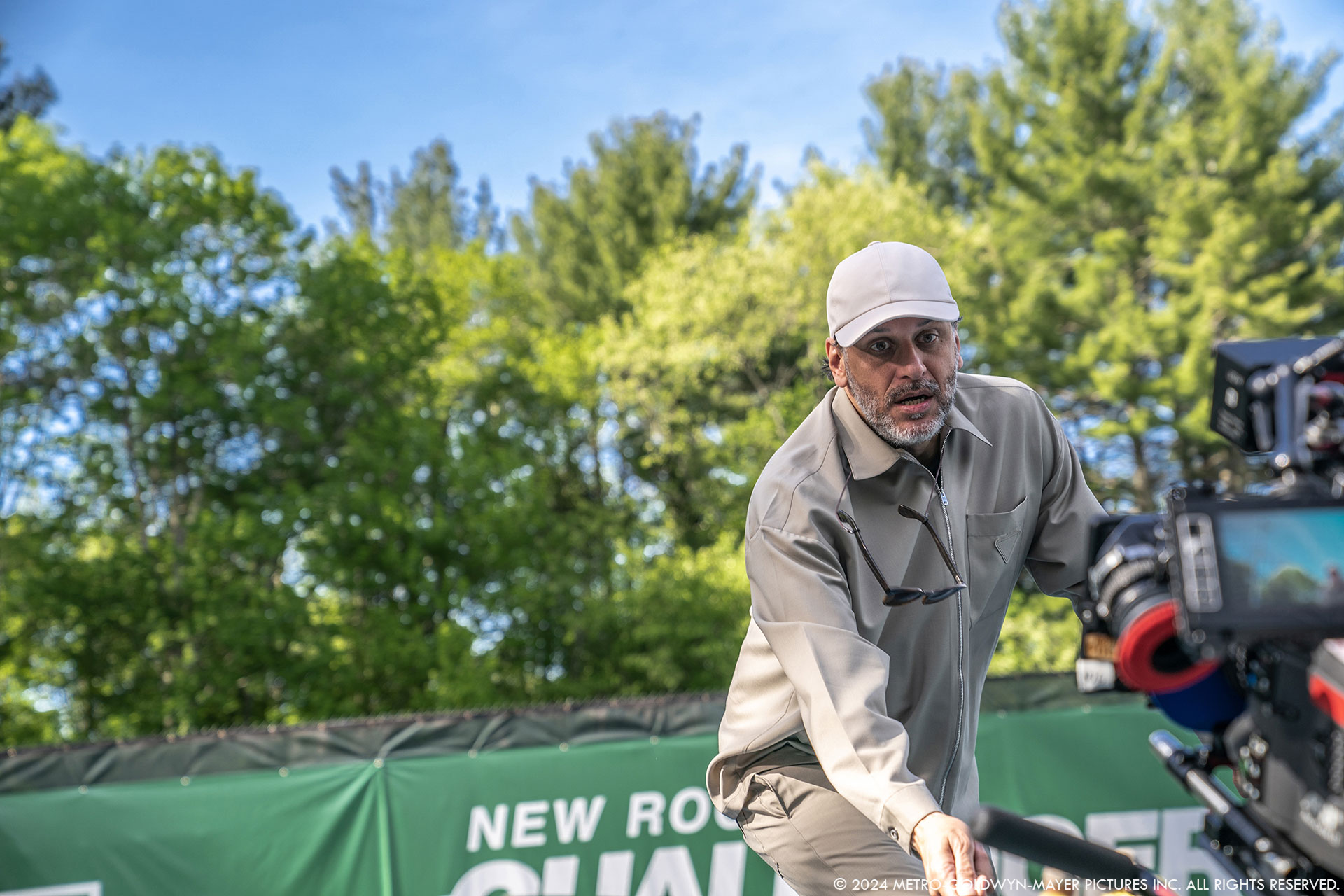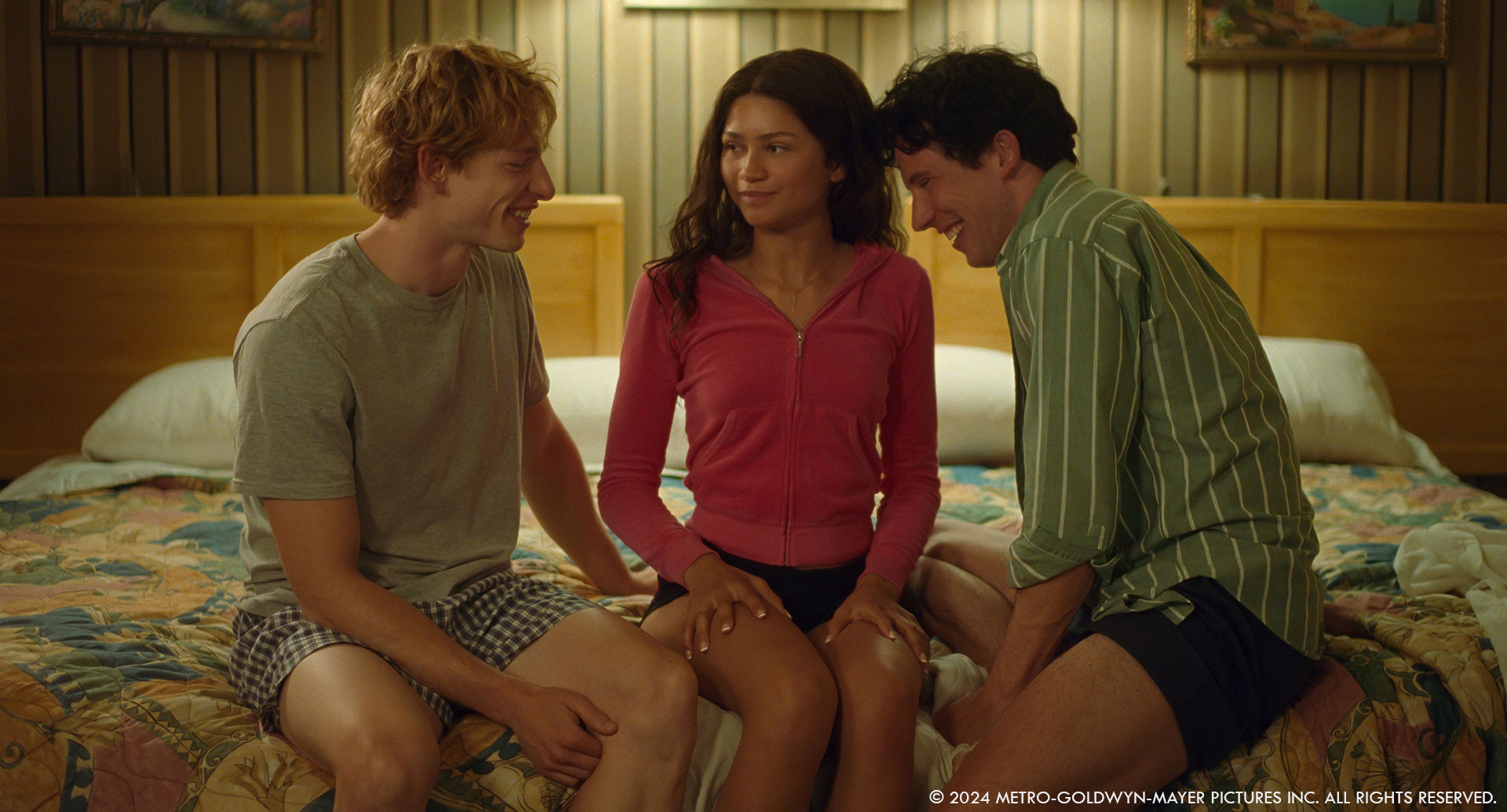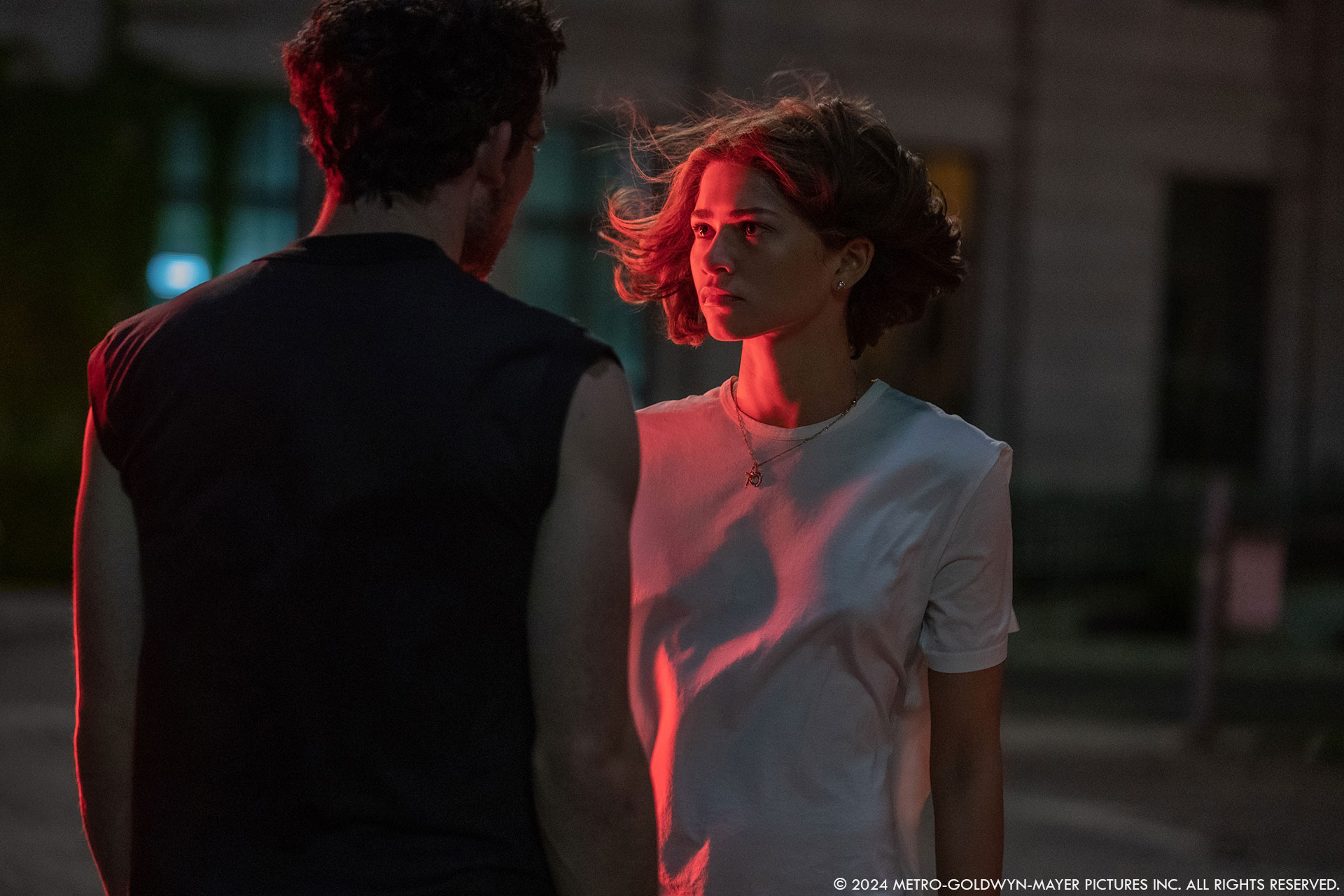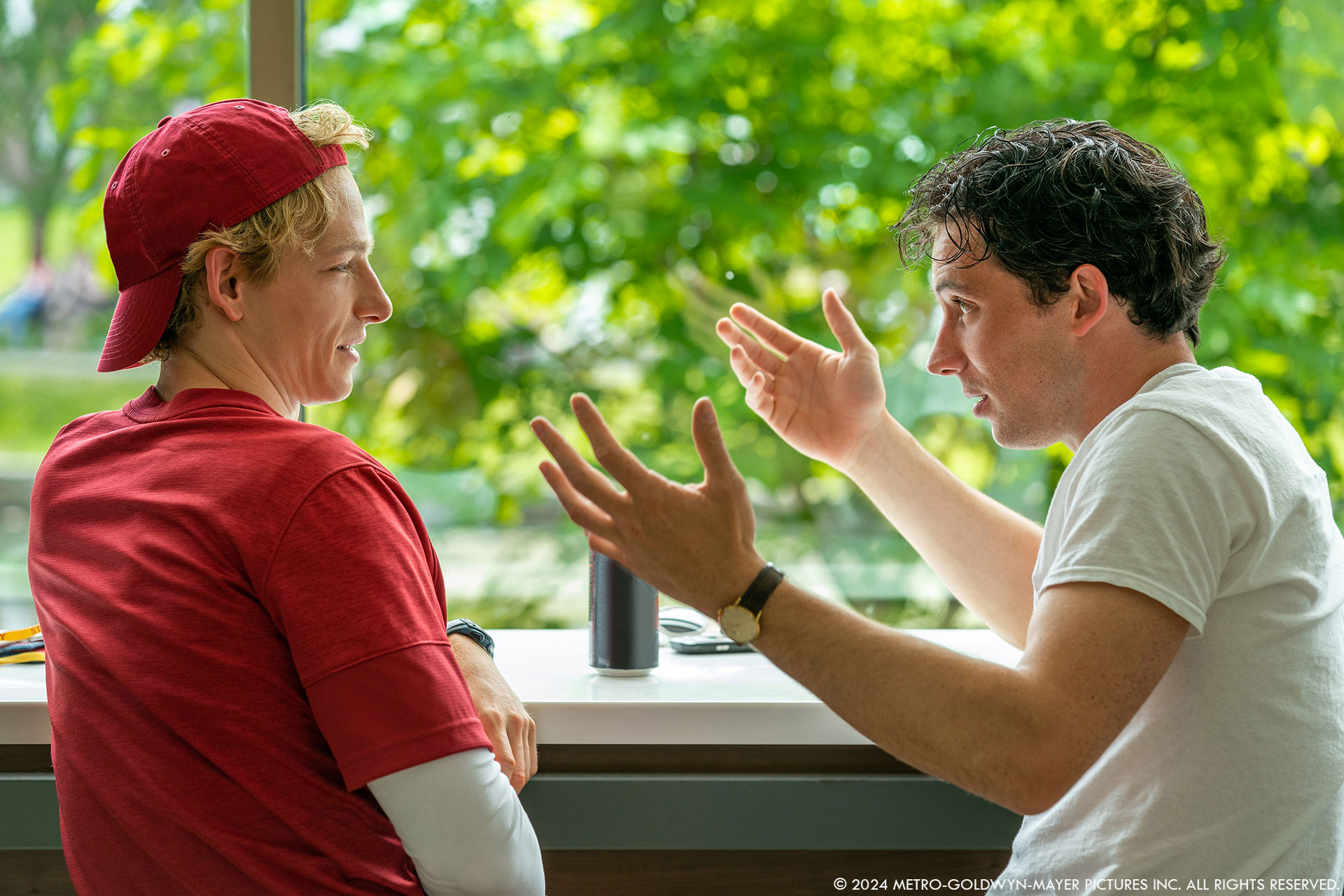In 2010, Brian Drewes co-founded the visual effects studio Zero VFX. Since then, he’s contributed his expertise to a range of various shows such as American Hustle, The Equalizer, Uncharted, and Gran Turismo.
What is your background?
Ever since college, where my first VFX experience was compositing on film using an Oxberry animation stand (my school inexplicably had one kicking around) – I’ve always been deeply interested in the visual effects process. I started off as a VFX Producer and after about 15 years co-founded Zero (which is now a member of Dream Machine). Being technically minded, I also became an inventor and CEO of ZYNC, the industry’s first cloud-rendering tool which was acquired by Google in 2014. This diverse experience led me to organically transition over the last decade or so into the Supervisor role.
How did you get involved on this movie?
As VFX Supe, I had worked previously with producers’ Amy Pascal and Rachel O’Connor (on 2019’s Little Women) and also the MGM team on Creed, so they sent along the script and I absolutely loved it. A couple of meetings later I was hired!
How was the collaboration with director Luca Guadagnino?
Luca is pretty amazing, full-stop. He knows exactly what he’s going for – he’s one of those directors whom you can see mentally editing the movie while giving direction – and because of this, for cast and crew alike, he’s able to really extract the nuances he’s searching for, whether it be a specific camera move or actor performance. Plus his eye is really, really good – he clearly expresses his expectations and it’s up to us to deliver on it. At the end of the day, he’s gifted with very strong vision and is going to get it, no matter what.
How did you organize the work with your VFX Producer?
This was my first time working with Daniel Chavez, VFX Producer, and it was a phenomenal partnership. I was a few weeks into prep before he was brought on – so on his Day 1 we had a broad idea of the overall scope – and once things really got cranking, he and I spent a ton of time breaking down each piece of the show and what it’d require. This ranged from invisible environment enhancements, the storm, and all then tennis action; closeup face replacements, racket swipes and then very specific moments like the Ball POV or other specials. It’s sometimes hard to find that good yin/yang with a Supervisor/ Producing team that hasn’t worked together previously, but we did just great!
How did you choose the various vendors and split the work amongst them?
Once we had an idea of overall scope, we worked closely to split the work between two vendors (Zero VFX and Frame by Frame) along with a small in-house team. We looked at the strengths of each facility and found the best match for both the creative needs of the show and the overall budget. Zero, led by Don Libby, Dan Cayer and Steven Spady handled all the tennis-related action, face replacements, CG enhancements, court re-lighting and other FX simulations. Frame by Frame, led by VFX Supervisor Marco Geracitano in Italy handled the majority of non-tennis related VFX, including some great environment work and the majority of the blowing debris sequences.

Can you walk us through the process of creating invisible visual effects, particularly focusing on the challenges faced when working on sequences like the tennis matches?
Especially in the Tire Town match, I believe this movie explores a new type of coverage to tennis, and honestly, sports movies in general – we wanted the audience to experience the physicality of the game, and this really only works if you are “in-close”. Thankfully the stars worked very hard in their training – they were pretty amazing athletes!
The obvious complicating factor is that with tennis, you’ve got a lot of distance up and down the court and things move VERY quickly. We also needed an organic feel to the camera (we shot on 35mm), keeping it flexible and intimate enough to respond to the actors’ performance and Lucas’ shooting style… so in partnership with DP Sayombhu Mukdeeprom and the entire camera department, we evaluated various toys like power sliders, cable cams, rickshaws etc to come up with the recipe that nailed it.
We faced one specific challenge in the Tire Town location, this is the big tennis match that serves as the spine to the movie, which was shot over a three week period. In the movie, this match occurs in the later afternoon to early evening, but over our three week shooting span – we obviously shot out of order, many times at the wrong time of the day or in lighting conditions different than previously shot. The electricians provided 2 soft suns to ensure key was from the right direction at all times, but beyond that there was not much lighting control… so Daniel and I knew for sure that we would need to substantially re-light the environment once the edit was tightened up. To aid in this effort we oversaw a multi-day highly detailed scanning process acquiring both lidar and full photogrammetry of the environment with various lighting conditions.
Once the edit was in decent shape, we broke down each sequence, mapped out the ideal sun position and shadowing on the court and dissected at shot level which elements needed relighting, CG replacement or DMP. It was very effective and I don’t think when you watch the film you’d feel this at all.
What were the specific goals and objectives when designing the visual effects for the tennis sequences?
Our objective on the tennis sequences was ‘real is right’…
To start, tennis consultant Brad Gilbert (coach to people like Andre Agassi) mapped out the tennis action for each match ensuring the tennis being depicted was accurate. He helped the stars train really intensely for the roles – the physicality of this should not go unmentioned. And though we leaned on our doubles a lot during shooting – the cut featured a ton of actors playing great tennis. Obviously, in the non-stylized moments, our VFX needed to embrace reality – from face replacements down to CG tennis balls.
At the end of the day we wanted the audience to be IN the action on the court. This informed camera and lensing choices – we were encouraged to push beyond the ordinary – and experiment with some non-traditional perspectives where the racket might swipe THROUGH the lens, or where the ball rockets directly into the lens, or where we seamlessly take the camera all the way from way behind the umpire, traveling down the net to settle in on a closeup of Zendaya.. and of course in the finale where we become the ball for a POV in a rally. Really unique, fun moments.
How did you ensure that the visual effects seamlessly integrated with the live-action footage in order to maintain the realism of the tennis matches?
I wanted to ensure we could get the VFX teams all the reference they needed to capture the subtleties – so for as many setups as feasible, we shot with the tennis doubles first – doing all the things, including striking the tennis balls. This achieved a few goals at once: it gave the actors a great example to follow, it provided the editor, Marco Costa, multiple choices for coverage (we were primarily single-camera) and made great references for digital tennis balls and face replacements when needed. Zero did a great job animating the balls– you’d be surprised how nuanced it becomes to get the trajectories, speed, moblur and contact shadows right when we need to audience to also recognize the ball is over the line or inside the line… So at times it was a balancing act of enhanced readability vs. reality.
On this topic we should talk about face replacements, which we had a good number of. I will always start this off by re-emphasizing how much blood sweat and tears the actors put into training, and they really did an amazing job. There’s just some things that no matter how hard you train, if you haven’t been doing it your whole life, you aren’t going pro in 8 weeks.
The methodology I initially prepped for was the traditional actor scan, rigging, key frame anim, light, render, comp pipeline. To add complication here, “Patrick” played by Josh O’Connor had 2 variations – beard and no beard. As it turns out finding tennis doubles that checked all the boxes was pretty hard, so we didn’t really get a choice – and unfortunately for us in the VFX department, things like ears, necks and head shapes were quite different than our leads. So in a number of quite featured shots, we went full head and neck replacement.
Zero, known for their crowd work, had also been developing a ML assisted face pipeline, which worked really well here, especially useful in the bigger shots and those with occlusions over our face replacements. In this methodology the face is worked on via the traditional FACS pipeline and at the same time they train an ML model – which they then run over the lit and rendered CG face, which is then all handed over to compositors, allowing them to dial in the desired details. This tact really got these shots over the line (pun intended).
Could you elaborate on the role of pre-visualization in planning and executing the visual effects for the tennis sequences?
As mentioned, all tennis action was boarded and we did a ton of camera testing which allowed us an organic approach to shooting – but there were 2 key moments that really needed previs:
- A three camera, seamless stitch (with nothing to occlude our transitions)
- The ball POV
The three camera stitch was quite a thing: We were on a crane way behind the umpire stand and during the match slowly pass to the side of umpire, following all the way along the top of the net to end in a closeup of Tashi (Zendaya) watching the match. Without transition points, continuous court action AND spectators following the action by moving heads left to right in unison means we didn’t have a lot of places to cheat this. So the previs/ tech vis really helped us nail down speed, lensing and how far each pass of the crane arm would take us and where our seam points would likely be.
On the ball POV, it was pretty clear to me from the beginning that Luca loved this idea and it was going to be mainly VFX that would be responsible for the plan on this one. And it’s such a crazy & technically challenging concept that previs was instrumental in helping us iterate and align on the sequence… and as I was the director of this unit it gave me faith that Luca would support what we committed to camera over the weekend we shot it.

What considerations were made regarding lighting and color grading to maintain consistency between the live-action footage and the visual effects elements?
Lighting was a huge consideration in the Tire Town match which spans the film. Due to the fact we shot across 3 weeks of time for a single tennis match, meant that once we got into post, we knew we’d have to come up with a plan to create lighting continuity across shots that were photographed on different days at DIFFERENT times of day. We did a number of environment scanning passes to capture the different lighting conditions and were able to build out a pretty impressive ability to relight scenes and the elements within. We had a number of standardized and approved HDRIs for different times of day at different places within the court that provided us our master setup that would then be dialed-in shot by shot. This ensured we didn’t have to stop production down at every setup for balls and charts – these were reserved primarily for moments where we knew face replacements were happening.
In terms of realism, how did you ensure that the movements and physics of the tennis balls and players remained accurate and believable?
It was easier for the actors to maintain their form if they didn’t also have to think about actually striking the ball – so we added a ton of CG tennis balls to help them here. Also Daniel and I worked with the AD team to ensure we had the tennis doubles go first on most setups – giving the VFX team ample, and actually useable, reference. For face replacements we made sure to allot sufficient scan time to capture enough expressions on each actor for full control – Zero’s face pipeline was able to deliver key frame-able animation with a ML-finishing process, so their team could dial in facial performance and then put the finishing touches in from their trained models.

How closely did you work with the director and other key creatives to fulfill their vision while implementing the visual effects for the tennis sequences?
This really was a team effort between the tennis advising team, AD’s, camera department, VFX, the actors and Luca – we were all really committed to his vision and creating a high-impact, visceral viewing experience. For the tennis days, I hung very close to Luca so we could look at playback together and interactively decide how to go about solving things as they popped up as it seemed to on almost every setup!
What were some of the key differences in approach between creating invisible visual effects for sports sequences compared to other types of VFX-heavy scenes?
I’ve worked on my fair share of sports movies – most times it’s about crowds and digital stadiums – not so here (though we did have some of this)… Our leads committed so much of themselves to getting good at tennis, they are the focus of the action and we need the audience to truly see this. This creates challenges as especially in tennis, there isn’t a ton of ‘hiding’ cute cheats – it’s our actors alone on a large, open court.
From the audience perspective, especially at the Tire Town match, the action here was more a car chase vibe – where the viewer is really invited to be in close. So we had to be really diligent in ensuring we kept them there – making sure any face replacements are perfect, the sports action authentic, and energetic moments are seen from unique vantage points. Though the choreography was very proscribed, each take it happens a little differently and in a fast-moving subject outcomes can be quite different- so I like the term ‘strategic flexibility’ – you make sure that the approach is solid but also flexible enough to accommodate variation. I made sure that VFX was there to ensure anything we discovered along the way could be adapted to quickly.
The storm in the movie plays a crucial role in the narrative. Can you delve into the technical aspects of its creation, from concept to execution?
Luca really wanted to see a crazy amount of debris to really emphasize the storm – and I liked the idea of the concept being quite stylized and breaking reality a bit, but keeping execution grounded in the real-world. Frame by Frame handled the majority of these shots beautifully – I made sure that on set we shot as much reference or real world debris as possible, including also Lidar of key sets and props for their FX artists to build sims on. For a few daytime shots with a lot of interactive elements (like tarps, table-clothes, tents, trees) we strategically placed both large Ritter fans and PA’s with leaf blowers in multi-pass shots to get as much ‘real is right’ moments – that then VFX would combine and augment.
Zero handled a few of these as well, a few big wides where we see indication of the approaching storm via debris and a large blowing fabric billboard – here we ensured we researched how these fabric billboards are constructed and hung to get our connection points accurate.

Can you discuss any specific scenes where visual effects were particularly challenging or innovative?
I mean, the Ball POV was a really challenging shot. We knew this was going to be quite stylized and really quite different than the rest of the film – but from my first meeting with Luca he had a very specific vision of what this should be – it needed to be different than anything seen previously and it was going to be integral in the final moments of the film. We elected to start the previs process with the audio-bed of an actual tennis rally – so each time we heard that ball getting smashed, we knew our camera had to be at the end of the court – it was real world speed we needed to accord to. I remember initially seeing our first volley from this vantage point at the required speeds… and I was like, “Wow, tennis is REALLY FAST!!”.
From there we took the choreography provided by Brad Gilbert – forehand vs. backhand, court location, etc and then worked on the lensing and camera direction, all within our CG tennis court which was modeled from the set drawing. We tried pretty much everything in previs, rolling cameras in all directions, corkscrews, lobs, hard baseline shots, everything. Once we had this iterated and approved by Luca I worked out the shooting plan – and it was certainly not a simple one… The show was shooting on 35mm and the equipment for this POV unit was limited to whatever 1st unit had – I knew for some of these shots we just couldn’t do it all in camera – so we switched to shooting open gate on digital, affording us more resolution for reframing and to get a camera corkscrew motion that Luca really liked. As the length of the court was much longer than our crane arm, we ended up having to split each full court travel into 2-3 separate shots – so we ended up block shooting out of order –finishing off all camera moves on one side of the court before turning around and shooting out the rest in the other direction. It was a bit of an exercise to keep track of where in 3d space the camera seams were so when we picked up the 2nd or 3rd segment of a seamed shot later in the day, the camera was in the right place at the right time – and we had 9 of these. We had our VFX editor and an additional supervisor from Zero on set to ensure we could move along with confidence. Given we didn’t have much control over lighting – we had to complete the day in about 5 hours – it was definitely a scramble but the crew was awesome and we got it done.
Compounding all this was that our plate would obviously need to be sped up, but our actors needed to stay real-time – for which we found a couple solutions. While shooting we had the doubles swing and move to the best of their ability at slower speed and we face replaced them. Secondarily we also did some pickup shots of the leads over blue screen and could track them into place which helped as well. Also involved here was plenty of CG rackets and arms for when our camera was getting “whacked”.
Once in post, we had a great CG asset of the court environment that we used to help us get a bit more control over the camera, help seam points and deal with the shifting lighting between seams (given that we had to shoot out of order). Once we had everything smooth, we experimented with a ton of tricks to help give the viewer a sense of where they were on the court while also not wanting them to puke …
The final shot included I think a total of 20-25 unique segments – we even labeled each segment with its’ own sub-ID so as we were iterating early versions we had a good way of talking about it and tracking it editorially, ensuring that as we sped up here or there to aid in overlapping the seam points the overall shot duration didn’t change.

Looking back on the project, what aspects of the visual effects are you most proud of?
I really think that we helped create a new style to shoot sports movies with – in some ways it felt like shooting a car chase, but in sports, if that makes sense. This is pretty cool for me.
Tricky question, what is your favorite shot or sequence?
I really like the moments where we got to surprise the audience with something unexpected, especially within the context of a sports-based movie.
How long have you worked on this show?
From prep to delivery, it was about 10-11 months.
What’s the VFX shots count?
Around 900.
What is your next project?
Currently I’m supervising Eenie Meanie out of 20th Century written and directed by Shawn Simmons, which tells the story of a reformed getaway driver dragged back into ‘the life’ – starring Samara Weaving – it’s going to be a fun one with lots of car chase action…
What are the four movies that gave you the passion for cinema?
#1 Jaws is my all-time fav. #2 When I was a kid I saw a behind the scenes of that mine-car chase in Temple of Doom – it pulled the curtain back for me – I realized how much of what I took for granted was in fact an illusion built by professionals. #3 The Matrix because it’s awesome and #4 Wavelength and anything Stan Brakhage, I was lucky enough in college to spend a year studying experimental animation and it definitely left its mark.
A big thanks for your time.
WANT TO KNOW MORE?
Zero VFX: Official website of Zero VFX.
Frame by Frame: Official website of Frame by Frame.
© Vincent Frei – The Art of VFX – 2024




